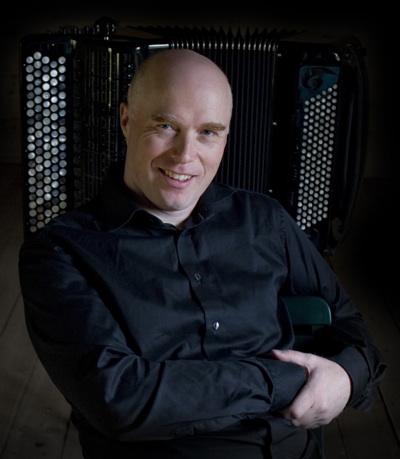Near miss in “Mystical”
The Berkeley Symphony’s winter concert, held last Thursday, December 3, explored the twin threads of mysticism and musical construction. Each of the three pieces on their program came from a religious framework and a fascination with structure, an unusual pairing that is the sort of intelligent programming we have come to expect from conductor Joana Carneiro, now beginning her seventh year at the helm of the Berkeley Symphony.
The center of the concert was Fachwerk, a concerto by contemporary composer Sofia Gubaidulina that featured the bayan, a Russian accordion. It was written for Geir Draugsvoll, a prominent Norwegian musician, and he was also the soloist at this US Premiere.
 Carneiro introduced the work and the soloist beforehand. “Gubaidulina has a deep spirituality and a connection to music of the past… and here, to Bach. ‘Fachwerk’ is a German term used in architecture for timber framing, and one can hear that sense of structure in this piece.”
Carneiro introduced the work and the soloist beforehand. “Gubaidulina has a deep spirituality and a connection to music of the past… and here, to Bach. ‘Fachwerk’ is a German term used in architecture for timber framing, and one can hear that sense of structure in this piece.”
This was a successful presentation of a difficult work, highlighting tweaked textures and a rich harmonic heritage. String slides and wooden percussion were a surprisingly good partner for the bayan. And then there were many moments that drew on Bach as the accordion mimicked an organ’s clear pipe-sounds and built to massive chords. But this was Bach through a meat grinder, chopped up and repurposed into a modern statement.
There is something about the measured wheeze and billow of accordion that relates to breath. In Fachwerk that translated into a measured tread that was more like statements and less like questions, lending a church-like solemnity to the whole. But along the way Draugsvoll inhabited cadenzas and virtuoso passages to turn that severity into a deeply personal statement.
This piece was well conceived for the strengths and popsicle flair of an accordion, and a welcome surprise in an era of conservative programming. The reading by a reduced Symphony – and it was written for a small number of strings and percussion only – was absolutely taut.
Of course conservative programming has its fiscal place today, and the empty seats may have attested to the fact that some are more comfortable with the triumphs of the past than with a living musical language – and it was their loss that they didn’t know how awesome an accordion can be!
The rest of the program was satisfying but problematic. They began with Canzon septimi et octavi toni by Giovanni Gabrieli, an excuse to put three groups of brass up in the balconies for a glorious surround sound. But the brass were a little uneven here and later.
They finished the concert with Modest Mussorgsky’s Pictures at an Exhibition, a crowd-pleaser that features each part of the orchestra and then returns to the main theme, lovingly performed each time on trumpet by Ari Micich. And again, horn bobbles detracted from the night, but they landed on their feet for the long build-up and huge final ensemble, a rounded and satisfying finish that left the patrons smiling.
Modest Mussorgsky originally wrote this famous cycle for the piano, and after he drank himself to death Ravel orchestrated it. Ravel’s choice of timbres is a bright and accessible palette, but some people prefer the original. I once heard Jean-Yves Thibaudet perform the piano version, and he created delicate colors from those black and white keys that an orchestra could only marvel at.
And perhaps that’s what orchestras are for: overstatement!
—Adam Broner
Photo of Geir Draugsvoll, courtesy of IASW2015
